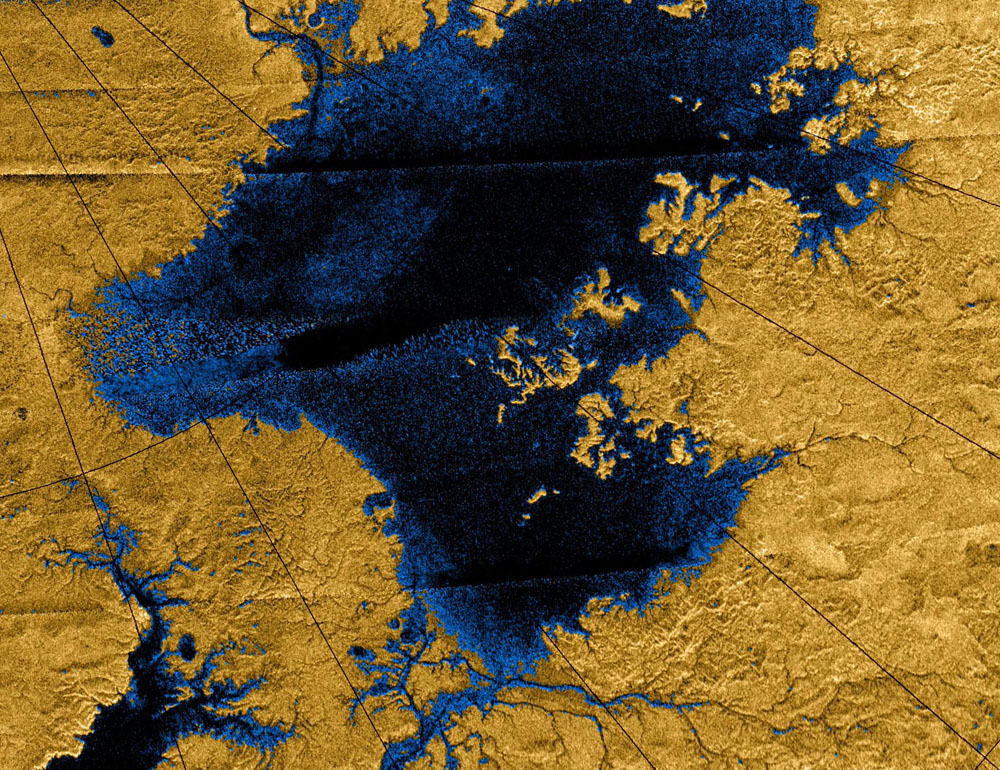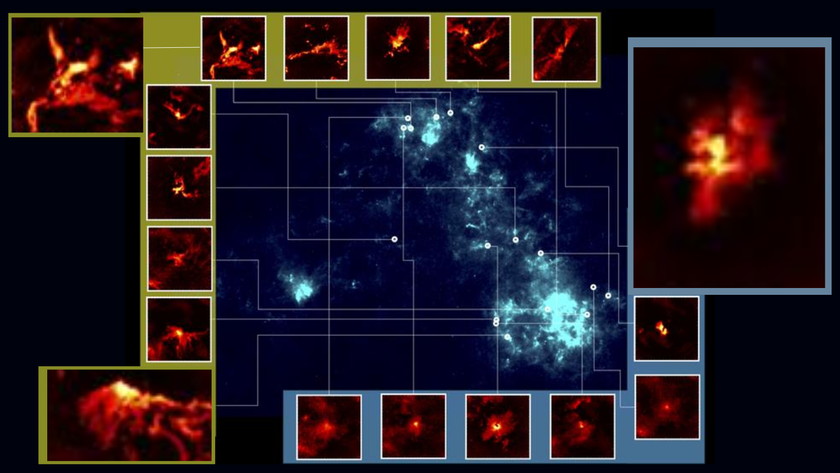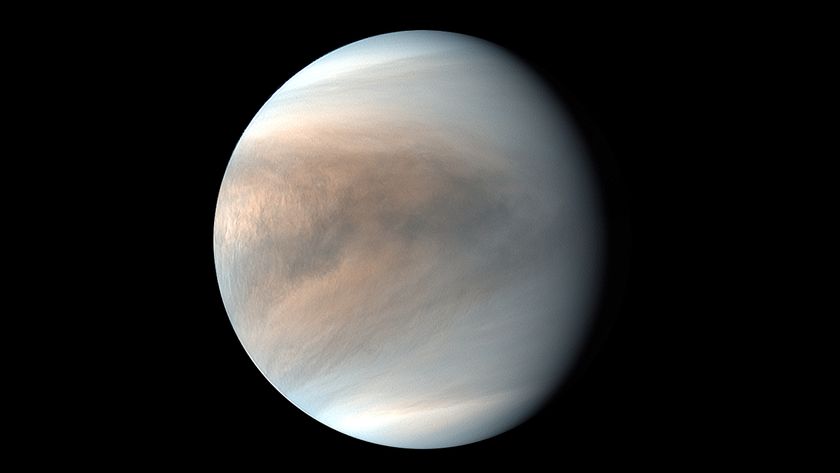Saturn's Moon Titan May Have Seen Earth-Like Erosion

The thick, hazy atmosphere of Titan, Saturn's largest natural satellite, hides a complex moon with a perplexing geological past, a new study finds.
Researchers from the Massachusetts Institute of Technology (MIT) in Cambridge and the University of Tennessee at Knoxville studied images of Titan to investigate the erosion of its terrain, over millions of years, by rivers of liquid methane.
The scientists found that in some regions, Titan's network of rivers caused surprisingly little erosion, which could indicate that erosion processes on Titan occur extremely slowly, or that a different, more recent phenomena is to blame for altering or eliminating ancient riverbeds and landforms, the researchers said.
"It's a surface that should have eroded much more than what we're seeing, if the river networks have been active for a long time," study co-author Taylor Perron, an assistant professor at MIT, said in a statement. "It raises some very interesting questions about what has been happening on Titan in the last billion years."
Peering into Titan's past
Titan is estimated to be approximately four billion years old, roughly the same age as the rest of the solar system, the researchers explained. The moon's dense atmosphere, largely made up of methane and nitrogen, created a thick orange haze that prevented astronomers from being able to see through to the surface.
In 2004, however, NASA's Cassini spacecraft pierced through Titan's cloudy cloak and snapped the first set of detailed radar images of the moon's surface. Cassini occasionally flies past Titan as it orbits Saturn.
Get the Space.com Newsletter
Breaking space news, the latest updates on rocket launches, skywatching events and more!
The images showed that Titan's icy terrain was carved out over millions of years by rivers of liquid methane, similar to how rivers on Earth leave their mark on the planet's rocky continents, the researchers said. But, while Titan's current landscape is now well documented, its geologic past remains a mystery. [Amazing Photos: Titan, Saturn's Largest Moon]
Most moons in the solar system are heavily pockmarked, with impact craters dotting their surfaces. Titan, on the other hand, is relatively smooth, despite the moon being roughly the same age as the rest of the solar system. Simply judging by its surface features, Titan would appear to be much younger, between 100 million and 1 billion years old, the researchers said.
To explain Titan's lack of craters, the researchers pointed to our own planet.
"We don't have many impact craters on Earth," Perron said. "People flock to them because they're so few, and one explanation is that Earth's continents are always eroding or being covered with sediment. That may be the case on Titan, too."
Finding clues on Earth
Geological processes, such as plate tectonics, erupting volcanoes, advancing glaciers and river networks, have altered Earth's surface over billions of years. According to the results of the new study, similar processes, including tectonic upheaval, icy lava eruptions, erosion and sedimentation by rivers, may also be factors on Saturn's largest moon.
Still, pinpointing which specific phenomena may have reshaped Titan's surface is a tricky task. Images taken by the Cassini spacecraft provide bird's-eye views of the terrain, with no details about a landform's elevation or depth.
"It's an interesting challenge," Perron said. "It's almost like we were thrown back a few centuries, before there were many topographic maps, and we only had maps showing where the rivers are."
To study how Titan's methane rivers eroded the moon's surface, the researchers mapped 52 prominent river networks from four regions. Images of these rivers were compared with a model developed by Perron of how a river network evolves over time.
Images of Titan were also compared with regions on Earth, including volcanic terrain on the island of Kauai and recently glaciated landscapes in North America. The researchers were able to draw parallels between our planet and Saturn's hazy moon, suggesting that similar geological processes may have altered Titan's icy surface in the recent past.
"It's a weirdly Earth-like place, even with this exotic combination of materials and temperatures," Perron said. "And so you can still say something definitive about the erosion. It's the same physics."
The detailed results of the study will be published in an upcoming issue of the Journal of Geophysical Research-Planets.
Follow SPACE.com on Twitter @Spacedotcom. We're also on Facebook and Google+.
Join our Space Forums to keep talking space on the latest missions, night sky and more! And if you have a news tip, correction or comment, let us know at: community@space.com.

Space.com is the premier source of space exploration, innovation and astronomy news, chronicling (and celebrating) humanity's ongoing expansion across the final frontier. Originally founded in 1999, Space.com is, and always has been, the passion of writers and editors who are space fans and also trained journalists. Our current news team consists of Editor-in-Chief Tariq Malik; Editor Hanneke Weitering, Senior Space Writer Mike Wall; Senior Writer Meghan Bartels; Senior Writer Chelsea Gohd, Senior Writer Tereza Pultarova and Staff Writer Alexander Cox, focusing on e-commerce. Senior Producer Steve Spaleta oversees our space videos, with Diana Whitcroft as our Social Media Editor.


